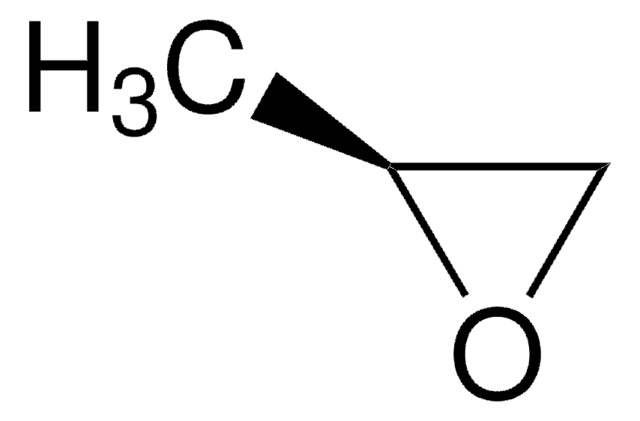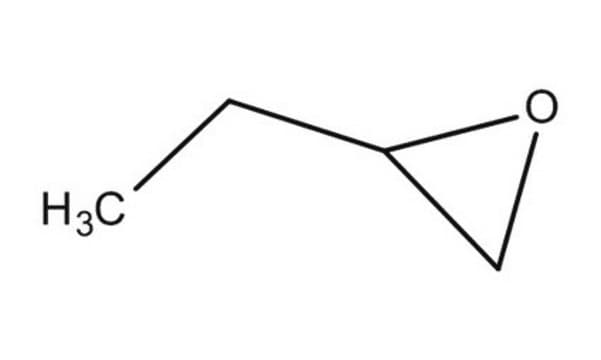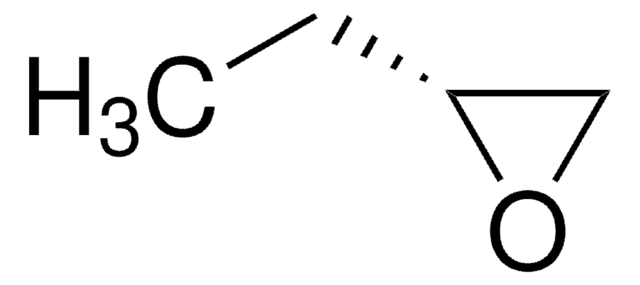110205
(±)-Propylene oxide
ReagentPlus®, ≥99%
Sinonimo/i:
(±)-Methyloxirane, 1,2-Epoxypropane
About This Item
Prodotti consigliati
Densità del vapore
2 (vs air)
Livello qualitativo
Tensione di vapore
29.43 psi ( 55 °C)
8.59 psi ( 20 °C)
Nome Commerciale
ReagentPlus®
Saggio
≥99%
Temp. autoaccensione
1378 °F
Limite di esplosione
37 %
Indice di rifrazione
n20/D 1.366 (lit.)
P. eboll.
34 °C (lit.)
Punto di fusione
−112 °C (lit.)
Densità
0.83 g/mL at 25 °C (lit.)
Condizioni di spedizione
wet ice
Temperatura di conservazione
2-8°C
Stringa SMILE
CC1CO1
InChI
1S/C3H6O/c1-3-2-4-3/h3H,2H2,1H3
GOOHAUXETOMSMM-UHFFFAOYSA-N
Cerchi prodotti simili? Visita Guida al confronto tra prodotti
Descrizione generale
Applicazioni
Confezionamento
Altre note
Note legali
Applicazioni
Avvertenze
Danger
Indicazioni di pericolo
Consigli di prudenza
Classi di pericolo
Acute Tox. 3 Dermal - Acute Tox. 3 Inhalation - Acute Tox. 4 Oral - Carc. 1B - Eye Irrit. 2 - Flam. Liq. 1 - Muta. 1B - STOT SE 3
Organi bersaglio
Respiratory system
Codice della classe di stoccaggio
3 - Flammable liquids
Classe di pericolosità dell'acqua (WGK)
WGK 3
Punto d’infiammabilità (°F)
-36.4 °F - Equilibrium method
Punto d’infiammabilità (°C)
-38 °C - Equilibrium method
Dispositivi di protezione individuale
Faceshields, Gloves, Goggles
Certificati d'analisi (COA)
Cerca il Certificati d'analisi (COA) digitando il numero di lotto/batch corrispondente. I numeri di lotto o di batch sono stampati sull'etichetta dei prodotti dopo la parola ‘Lotto’ o ‘Batch’.
Possiedi già questo prodotto?
I documenti relativi ai prodotti acquistati recentemente sono disponibili nell’Archivio dei documenti.
I clienti hanno visto anche
Il team dei nostri ricercatori vanta grande esperienza in tutte le aree della ricerca quali Life Science, scienza dei materiali, sintesi chimica, cromatografia, discipline analitiche, ecc..
Contatta l'Assistenza Tecnica.











